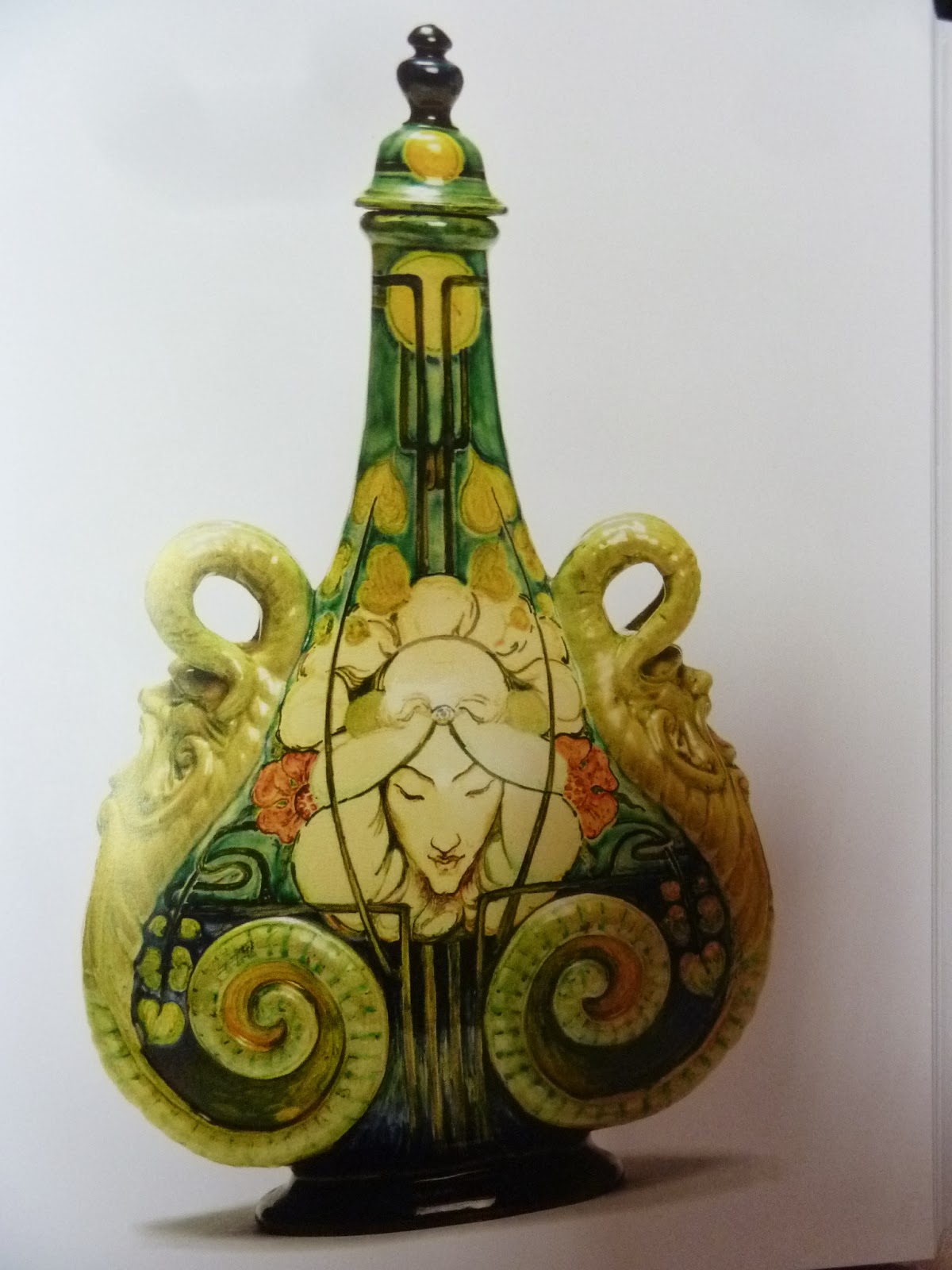Peter Hyland called in today with a copy of his new book ‘THE DELLA ROBBIA POTTERY’

I had given him an image of a piece that I consider the best piece of Della Robbia that I have seen. I bought it in France.
Peter wrote the book The HERCULANEUM POTTERY Liverpool’s Forgotten Glory.
My image was not as high resolution as he needed for publication, which is a shame, but there you go. I love it.
The book is enriched with illustrations and on first glance it looks extremely comprehensive.
Della Robbia had a brief lifespan from 1894-1906. It was founded by Harold Rathbone.
Walter Crane attended a VIP ceremony at the Walker Art Gallery on 10th February 1894 when the prominent speaker Sir William Forwood spoke of the need to keep tradition with pottery and the applied arts on Merseyside. And he said he is pleased to think that Mr Rathbone and some members of his family had already made a departure in that direction.
In the same month Della Robbia opened.
You have to ask in retrospect why a pottery was formed, to produce wares of an antique Italian tradition than of a thrusting enterprise in a modern age.
Arts and Crafts had swept the country and we see at this time the same principles being laid down in numerous potteries the length and breath of the British Isles.
Liberty sold Della Robbia.
The Birkenhead based pottery had a retail outlet in Berry Street Liverpool.
Some of its pottery ladies would be trained at the Art Sheds under the influence of Herbert MacNair and his wife Francis MacDonald who were half of the Glasgow Four. The others being Charles Rennie Mackintosh and Margaret MacDonald.
CRM would submit a design for the proposed Anglican Cathedral.
Cassandra Annie Walker who is recognised as one of the top pottery ladies at Della Robbia must have fell under the influence of The Glasgow Style.
Her designs for the cover page of The Sphinx certainly bear that out.
That style would be swept away by Charles Reilly at the Liverpool School. He hated Art Nouveau and led the city into a Beaux Arts style, not only in his architectural teaching but also in the practice of applied arts and decoration.

The Della Robbia covers such a small period in the development of art and architecture on Merseyside, slightly idealised with sentimentality and rustic ideals.
This would be swept away with the industrial scale killing in the Great War that would employ methods of mass production that would later be employed in the domestic manufacture of almost everything.
Though it closed in 1906 we see through the beginnings of Della Robbia a microcosm of society and its ideals.
Della Robbia prices have been on the increase for a while now, but beware, as a potter, I see it as some of the worst pottery that should not have been let out of the workshops…and some of the best.
The pottery is an oxymoron of itself.
My personal opinion is that its rustic antique style is hiding, on a far too often occasion, bad workmanship.
Yet ‘Boy and Lanthorn’ a panel by Conrad Dressler which was exhibited at the Walker Art Gallery in 1895 is of the highest quality in design and workmanship.
Frank Watkin was the thrower. And Dressler was the chief designer and modeller until 1896. Carlo Manzoni took over the role in 1898.
It was quite a going concern.
There is a huge collection in the Williamson Art Gallery.
http://waynecolquhoun.blogspot.co.uk/2009/03/williamson-art-gallery.html
They designed a fountain for the Savoy Hotel and a monumental fountain in Newsham Park with Hippocampus holding a monumental bowl aloft.
There are amazing pots and plaques and tile panels.
The main decorators were….well you will have to buy this well put together book that Peter has exhaustively compiled for your delectation.
